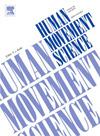考虑注意焦点的策略自言自语对离散运动任务绩效的影响
IF 1.9
3区 心理学
Q4 NEUROSCIENCES
引用次数: 0
摘要
自我对话匹配假说预测,指导性自我对话在涉及精确和准确性的任务中更有效,而动机性自我对话在涉及耐力、力量和力量的任务中更有效(Theodorakis et al., 2000)。大约60%的自我对话干预支持这些差异效应预测(Hardy et al., 2018)。注意焦点研究可能会加强匹配假设,其中外部焦点已被证明可以提高各种运动任务的表现并促进学习(Chua et al., 2021)。据推测,教学自我对话通过注意机制影响绩效(Galanis & Hatzigeorgiadis, 2020)。在教学性自言自语中注入内部和外部注意焦点可能会使教学性自言自语和动机性自言自语之间出现更一致的表现差异。本研究的目的是比较内部和外部焦点的教学性自我对话与动机性自我对话。36名参与者(男10人,女26人,男20.65岁)按平衡顺序完成60次飞镖投掷,其中在控制(CON)、内部指导性自我对话(IIST)、外部指导性自我对话(EIST)和激励性自我对话(MST)四种条件下各15次。通过平均径向误差(MRE)和双变量误差(BVE)来衡量准确性和一致性。对于受试者内设计,对每个因变量分别采用四个水平(即CON、IIST、EIST和MST)的单因素重复测量方差分析。EIST和MST的MRE显著低于IIST (p < 0.05)。结果表明,将外部焦点纳入教学自言自语可能有利于离散运动任务的表现。本文章由计算机程序翻译,如有差异,请以英文原文为准。
The effects of strategic self-talk with consideration of attentional focus on discrete motor task performance
The self-talk matching hypothesis predicts that instructional self-talk is more effective for tasks involving precision and accuracy, and that motivational self-talk is more effective for tasks involving endurance, strength, and power (Theodorakis et al., 2000). Around 60 % of self-talk interventions support these differential effects predictions (Hardy et al., 2018). Attentional focus research may strengthen the matching hypothesis, where an external focus has been shown to improve performance and facilitate learning for a variety of motor tasks (Chua et al., 2021). It has been postulated that instructional self-talk impacts performance though attentional mechanisms (Galanis & Hatzigeorgiadis, 2020). Infusing internal and external attentional focus into instructional self-talk may allow more consistent performance differences to emerge between instructional and motivational self-talk. The purpose of the present study was to compare instructional self-talk with internal and external foci to motivational self-talk. 36 participants (Male = 10, Female = 26; M = 20.65 years) completed 60 dart throws in a counter-balanced order, with 15 occurring under each of four conditions: control (CON), internal-instructional self-talk (IIST), external-instructional self-talk (EIST), and motivational self-talk (MST). Performance was measured through mean radial error (MRE) for accuracy and bivariate variable error (BVE) for consistency. For a within-subjects design, data were analyzed with separate one-way repeated measures ANOVAs with four levels (i.e., CON, IIST, EIST, and MST) for each dependent variable. EIST and MST had significantly less MRE than IIST (p < .05). Results suggest that incorporating external focus into instructional self-talk may benefit discrete motor task performance.
求助全文
通过发布文献求助,成功后即可免费获取论文全文。
去求助
来源期刊

Human Movement Science
医学-神经科学
CiteScore
3.80
自引率
4.80%
发文量
89
审稿时长
42 days
期刊介绍:
Human Movement Science provides a medium for publishing disciplinary and multidisciplinary studies on human movement. It brings together psychological, biomechanical and neurophysiological research on the control, organization and learning of human movement, including the perceptual support of movement. The overarching goal of the journal is to publish articles that help advance theoretical understanding of the control and organization of human movement, as well as changes therein as a function of development, learning and rehabilitation. The nature of the research reported may vary from fundamental theoretical or empirical studies to more applied studies in the fields of, for example, sport, dance and rehabilitation with the proviso that all studies have a distinct theoretical bearing. Also, reviews and meta-studies advancing the understanding of human movement are welcome.
These aims and scope imply that purely descriptive studies are not acceptable, while methodological articles are only acceptable if the methodology in question opens up new vistas in understanding the control and organization of human movement. The same holds for articles on exercise physiology, which in general are not supported, unless they speak to the control and organization of human movement. In general, it is required that the theoretical message of articles published in Human Movement Science is, to a certain extent, innovative and not dismissible as just "more of the same."
 求助内容:
求助内容: 应助结果提醒方式:
应助结果提醒方式:


